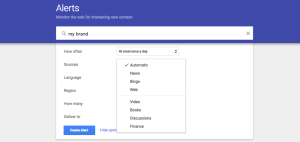— June 26, 2017

Case studies are one of the most powerful items in your B2B marketing toolbox.
According to a Content Marketing Institute study, B2B marketers called customer testimonials and case studies their most effective content.
Meanwhile, Dimensional Research found that 90% of buyers who read positive customer success content claimed that it influenced their purchasing decision.
But if you’re part of a small marketing team, you might not have the time to develop all of the case studies you need to turn prospects into customers.
According to the latest B2B Content Marketing Benchmarks, Budgets, and Trends report, the biggest barrier to content marketing success is not devoting enough time to it.
Here are five keys to publishing a steady stream of customer success content – even if you don’t have the time:
1. Work with the right customers
Finding a customer who will agree to a case study – and then getting their story approved – can take a long time.
If you’re in a hurry to fill your content calendar, you must reach out to the right customers. Look for someone who is already raving about you on social media, in online reviews, or via email. Chances are, this customer will be more than happy to help you.

2. Use video testimonials
Ask your customers to share their stories on camera. A short interview will require minimal editing and allow you to quickly publish new content.
3. Send your customer interviews out for transcription
Most marketers record their customer interviews. Recordings are helpful, as they give you something to refer to when you write a case study and need to insert compelling quotes.
But it takes a long time to listen to a recording and find an ideal sound bite – especially if you spent an hour on the phone with your customer. When you transcribe your interviews, you can quickly search them for key phrases. Then, you can copy and paste your customer’s exact words into your case study. You may still need to do some editing, but working from a transcription will save you a lot of time.
4. Develop a case study formula
Creating great content is 50 percent about your writing abilities and 50 percent about your process.
When you have a proven, repeatable process, you can quickly produce case studies. You’ll also deal with fewer revisions and get approvals faster.
I recommend that you create a list of questions that you will ask all of your customers during case study interviews. That way, you won’t need to spend a lot of time preparing for an interview.

Also develop a template for your case studies. What information would you like to include? Strong case studies usually contain the following sections:
The customer: Include a sentence or two about the company. I often pull this information from the boilerplate at the end of a customer’s press release.
- The challenge: What challenges did your customer try to solve before they started to use your products or services? How were these challenges negatively impacting their business?
- The discovery: How did your customer find out about you? Why did they choose you over your competitors?
- The implementation: How did they implement your product or service? Did you help them overcome any challenges during this phase of the project? If so, how?
- The results: What ROI did your customer achieve? Insert as many numbers related to their success as possible.
Be sure to include these sections, or some variation on them, in your case study template.
5. Get someone else to write your case studies for you
If you are swamped, you might benefit from hiring a freelance copywriter to write your case studies. They can handle everything from interviewing your customer to the final edits. The only thing you’ll need to do is get approvals.
Try some of these techniques when you need to create customer success content but are short on time.
After you complete a case study, be sure to share it across a number of channels. Don’t just bury it on your website and hope leads will find it. When you take your message beyond your website, you increase your chances of connecting with customers as they are getting ready to buy and want proof that your products deliver results.
Business & Finance Articles on Business 2 Community
(62)






